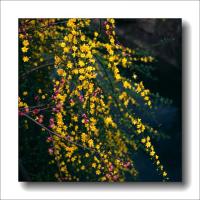Introduction
Shrimp plants, also known as Justicia brandegeana, are native to Mexico and Central America. They are a popular houseplant due to their unique appearance, which features long-lasting white, pink, or red bracts that resemble a shrimp's tail. Caring for a shrimp plant can be a rewarding experience, as long as you provide them with the proper conditions they need to thrive.
Lighting Requirements
Shrimp plants require bright, indirect sunlight to grow properly. Direct sunlight can damage the leaves and cause the plant to wilt. If you can't provide enough natural light, you can use artificial lighting, such as fluorescent bulbs or LED grow lights, to supplement the plant's needs. Place the plant near a window that receives plenty of sunlight but keep it out of direct sunlight to avoid scorching the leaves.
Watering
Proper watering is essential to keeping a shrimp plant healthy. Water the plant when the top layer of soil feels dry to the touch. Don't overwater the plant as this can cause root rot and other issues. The soil should be well-drained, and any excess water should be removed from the saucer underneath the pot to prevent root rot. In the winter months, reduce watering frequency as the plant's growth slows down during this time.
Humidity
Shrimp plants prefer a humid environment with 50-60% humidity levels. You can increase humidity by placing a tray of water near the plant or by using a humidifier. Misting the plant daily can also help increase humidity levels. Low humidity can cause the plant's leaves to turn brown and drop off.
Fertilizing
Feed shrimp plants with a balanced, soluble, water-soluble fertilizer every two weeks during the growing season (spring to summer). Use a fertilizer with equal amounts of nitrogen, phosphorus, and potassium. Avoid over-fertilizing the plant as this can lead to leaf burn and damage.
Pests
Shrimp plants are susceptible to common houseplant pests such as mealybugs, spider mites, and scale insects. Check the plant regularly for any signs of infestation and treat it with insecticidal soap or neem oil as soon as possible to prevent the pests from spreading to other plants.
Pruning
Prune shrimp plants frequently to keep them neat and tidy. Remove any dead or yellowing leaves, flowers, or stems as they appear. Pinch back the tips of the plant to encourage bushier growth and prevent leggy, uneven growth. You can also propagate the plant by taking stem cuttings and rooting them in water or soil.
Conclusion
Shrimp plants are beautiful and unique houseplants that are relatively easy to care for as long as you provide them with the proper conditions. With bright, indirect sunlight, proper watering and fertilizer, high humidity, pruning, and pest management, your shrimp plant will thrive and be a beautiful addition to your indoor garden.

 how many times do yo...
how many times do yo... how many planted tre...
how many planted tre... how many pine trees ...
how many pine trees ... how many pecan trees...
how many pecan trees... how many plants comp...
how many plants comp... how many plants can ...
how many plants can ... how many plants and ...
how many plants and ... how many pepper plan...
how many pepper plan...
































